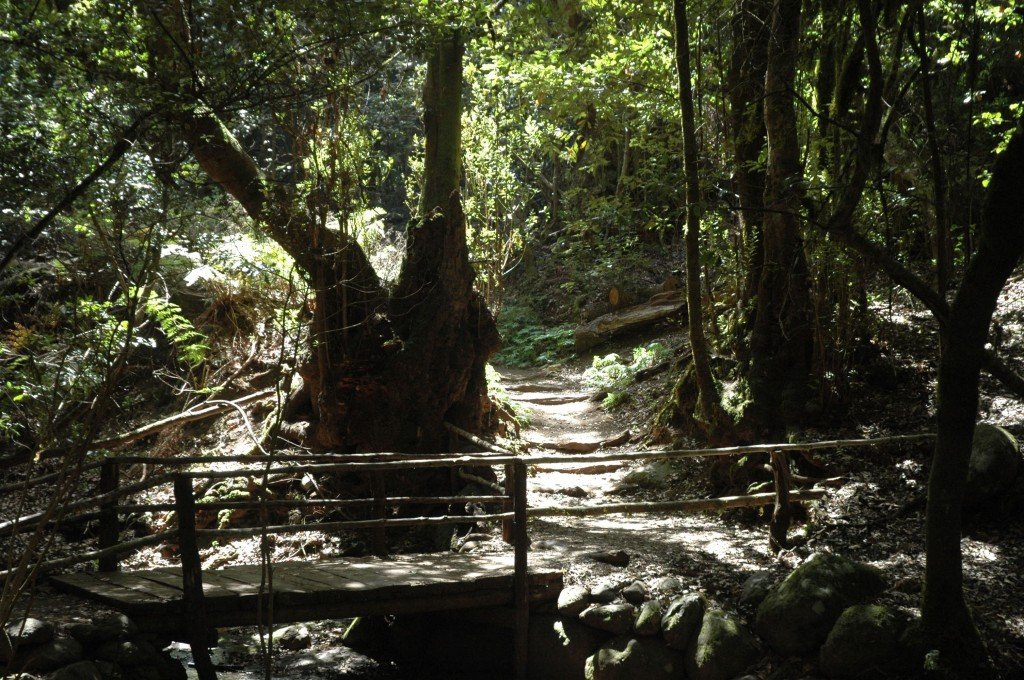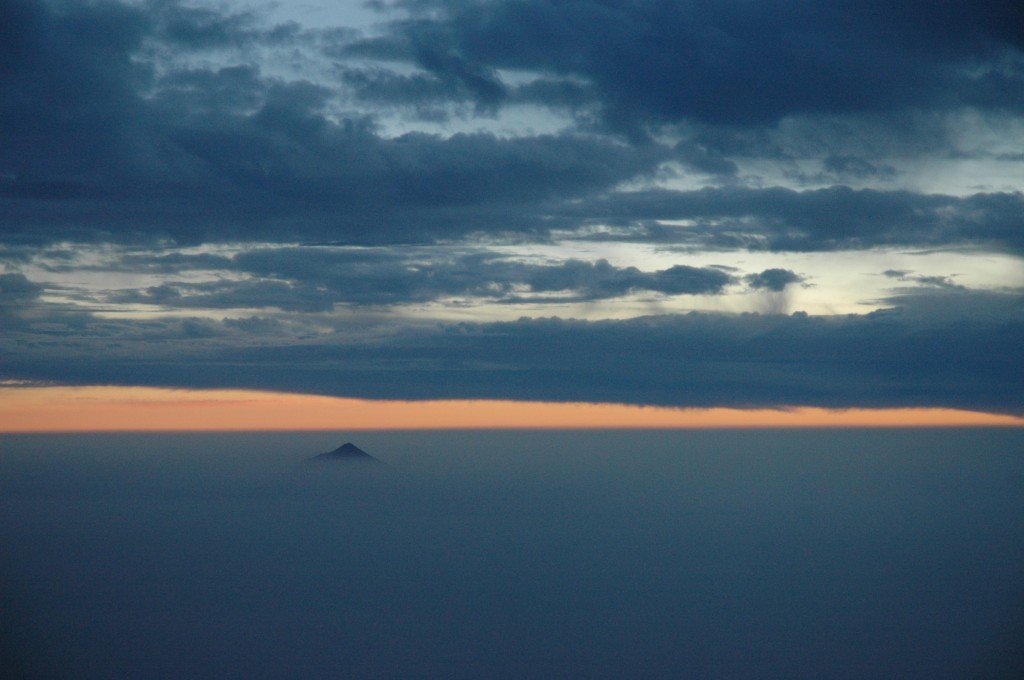Ladies’n gangsters!
For the benefit of a possible other reader outside Viking lands, this blog will occasionally publish posts in Foreignish. (Foreignish for those who are foreign for those who need to read in Foreignish, that is).
Since the writer of this blog happens to be a geologist, many posts will also deal with geology or pretty pictures thereof. Get used to it. This time, we go to the Canary Islands, but not for the same reasons other people do.
(NB: All images are copyrighted and may not be used without written permission from me; otherwise, I will tell your mother).
—
In the Canary Islands, just to the left of Tenerife, is a little round island: La Gomera is the green pearl of the Canary Islands, and it offers a lot of interesting things to see for a geologist.
People go to the Canary Islands to sunbathe on beaches, on white sand imported from the Sahara, where they just have remember to turn each half an hour to distribute the skin burning evenly. Or they get pissed and do things they would never do at home. The tourist machine on Tenerife, while waiting for the flight home, was such a kitchy hellhole that Burger King was the best option for getting dinner in between the tourist traps.
What a contrast Gomera is then – a place to relax, to enjoy nature, to find silence – or dance with the Atlantic waves on beaches with real, black volcanic sand!
The volcanic origin of the Canary Islands is evident everywhere, with basalt and other extrusives as the main rocks. Best known is the Pico del Teide, the mighty 3718 meters tall active stratovolcano that rises above Tenerife, last erupting in 1909. On Lanzarote, the Timanfaya national park encompasses a moon landscape of craters, formed during a long eruption series from 1730 to 1736. The last onshore eruption in the islands took place on La Palma in 1971, and a submarine eruption took place south of El Hierro in the winter of 2011-2012.
The origin of the volcanism itself is enigmatic. The islands do not have the consistent younging and erosion trend expected above a typical hotspot. Instead, volcanism has taken place with irregular intervals, volcanic centres jumping back and forth between the islands. Notably, the Canaries are on structural trend with Quarternary volcanism in Morocco, and this corner of the Atlantic also contains the volcanic island of Madeira and numerous seamounts. Complex crustal structure created by the interplay between the Europe-Africa collision and the opening of the Atlantic likely had great impact on the distribution of magma.
But, let’s leave the large scale tectonics and take the ferry back to La Gomera. Upon arrival in the capital San Sebastian, the southern part of the island looks quite brown and grey, a half desert of eroded volcanic rocks. But drive an hour, to the North side, and a green paradise unveils: A thick, green leaf forest where birds sing to the playful sound of running streams. This is the Laurissilva forest, eternally green and the life blood of the island.
The Laurissilva forest is not green from rain, as the dry semi-deserts on the Canary Islands testify. Instead, it catches the moist carried with the trade winds, which eternally blows from the humid north, touches the Canaries and then crosses the Atlantic towards the Caribbean. In the morning, the mountains on the North side of Gomera are often covered in fog, more reminiscent of a mystic place in the North, than a subtropical island.
The fog condenses on the trees, and seeps into the ground, where porous volcanic rocks in the deep of the island act as a large sponge, and stores the water. This water keeps the forest eternally green, is the source for all the streams on La Gomera, and supplies the drinking water. It becomes clear why the forest is protected by the Garajonay National Park. The park is named after the highest peak on Gomera. At 1487 meters Garajonay, easily reached by a short walk from the road, offers a great view of much of Gomera. In the distance, the mighty Teide on Tenerife rises so high that one still has to look upwards to the peak.
Laurissilva forests also cover parts of La Palma and Tenerife, and some spots on Gran Canaria, always on the north side of the island and in the height, facing the trade winds. The southern side of the islands are in the shadow. Lanzarote and Fuerteventura are too low and to the East of the winds, and are therefore deserts.
La Gomera is shaped like a giant fruit squeezer, with steep valleys radiating from the center. The shape does not reflect the original shape of Gomera, with a volcano in the center. Gomera is now in the post-volcanic erosion stage, and erosion is digging out steep valleys towards the coast.
Before roads, the steep valleys isolated communication, and the people of Gomera developed a unique means of communication: A whistling language, combining various frequencies, and increasing or decreasing tone as substitutes for letters.
The North part of La Gomera exposes the oldest rocks on the island, a basal complex with abundant volcanoclastics, conglomerates and intrusives. Zeolites are common in the older basalts; the vesicles are usually small but the crystals are pretty for a mineral collector (like me).
Approximately 13 ma, Gomera breached sea surface. Volcanism then moved slightly to the south, covering the south and central part of the island in plateau basalts with interbedded tuffs around 5 ma, beautifully exposed in cliffs on the SW coast, near Valle Gran Rey. Since that, Gomera has been eroded to the present shape.
Today, the only remains of volcanoes per se are the “rocas”, remnants of viscous volcanic plugs, where the surrounding, softer rock has been eroded. The rocas stand out as huge, thick obelisks above the landscape. Notable examples are the Roque Cano, residing like a guard in the valleyside above the town Vallehermoso on the north coast, and the four rocas at La Zarcita, creating a landscape from a science fiction movie, or as if four big trolls had been surprised by the sun and frozen to stone.
And then, it was time to leave the locals behind and fly home…











Pingback: Roque Nublo, Gran Canaria: The big finger to the sky | Karsten Eig·
Pingback: Malta article now in GEO ExPro! | Adventures in geology - Karsten Eig·
Pingback: El Teide: The third tallest mountain in the world – and home to the devil! | Adventures in geology - Karsten Eig·
Pingback: El Teide, the great impressionist | Adventures in geology - Karsten Eig·
This is a great piece to read. In September, it will be my first travel in Europe and Spain is the lucky one! Good thing that I found this page so I can have a little know how when I go there. I have on my list is Garajonay National Park which I read as well in https://www.canaryislandsinfo.co.uk/la-gomera/things-to-do/, I’m so excited!